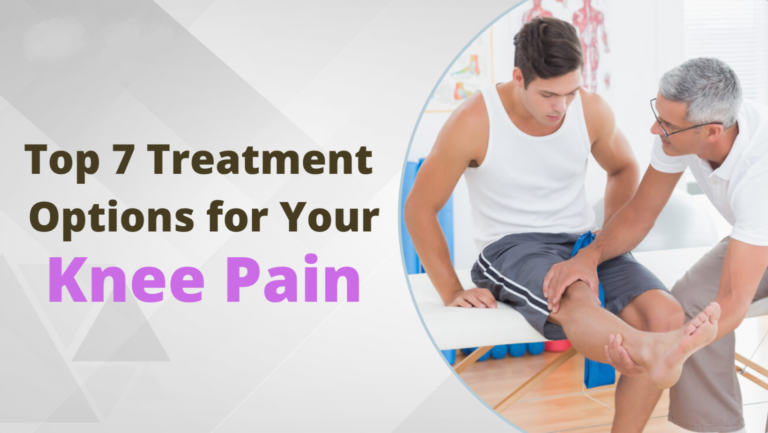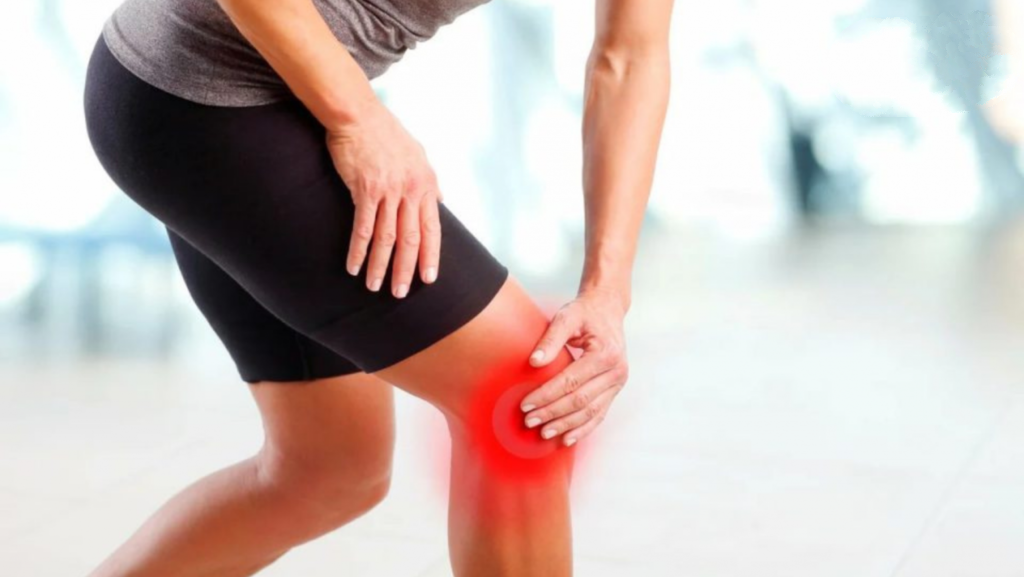
Knee pain is a frequent ailment that can be brought on by both immediate and long-term issues.
Many temporary knee issues can be treated by patients on their own, without the assistance of medical professionals. Whether your knee discomfort is the result of a recent injury or long-term arthritis, there are several things you may do to help. Knee pain treatment is done by many ways.
Different Options For Treating Knee Pain
Exercise
Pain management doctors suggest exercise. One of the most common causes of knee discomfort, osteoarthritis (OA), can be delayed by exercise. To control OA of the knee, they advise people to exercise. Yoga, tai chi, swimming, cycling, and walking all have potential benefits. Whether a person has OA or not, being physically active improves the health of cartilage tissue. The body\’s capacity to sustain the joints also gets better with exercise. The knees significantly benefit from leg muscle strengthening. Activities like water aerobics, which are easy on the knees, can help those with joint pain.
-
Therapy
Your knee will become more stable if the muscles surrounding it are strengthened. Depending on the precise disease that is causing your discomfort, your pain management doctor may advise physical therapy or various forms of strengthening activities for knee pain treatment.
If you play a sport or are physically active, you may need to do some exercises to establish a proper technique for your sport or activity and to modify movement patterns that may be harming your knees. Exercises that increase flexibility and balance are also crucial.
Arch supports, often with wedges on one side of the heel, can aid in relieving pressure from the knee\’s osteoarthritis-prone side. Various braces can be used in some circumstances to support and protect the knee joint.

Position and Assistance
Avoid low chairs and couches that you \”sink\” into; sit on a pillow to raise your seating level; check that you have good sitting posture without slouching or leaning; wear supportive shoes and stay away from those with broken arches because they can cause abnormal force and wear on the knee; avoid prolonged sitting and long periods of inactivity because, Without movement, joints may become sore and uncomfortable.
-
Weight Loss
Obese or overweight people are more likely to experience knee pain.. Knee pain treatment is also possible by weight loss.
The joints work harder when they are carrying additional weight. Losing it aids in easing chronic knee discomfort, particularly arthritis-related pain. Your knees are impacted by increased body-wide inflammation brought on by carrying more weight. Eating well aids in maintaining a healthy weight.
A balanced diet is one that is low in meat, animal fat, and other types of fat while being high in fruit, vegetables, and fibre. The Arthritis Foundation suggests a fresh produce-heavy Mediterranean diet. If a person has obesity or excess weight, experts advise them to lose weight if they have osteoarthritis of the knee. How much weight a person needs to lose can be decided with the advice of a doctor or nutritionist. Additionally, they can aid with diet planning.
Medications
Knee pain treatment is also done by medicines. Aside from other drugs, non-steroidal anti-inflammatory drugs can ease arthritis-related knee pain. Some of these must be administered in a medical facility, but others can be taken either with or without a prescription at home.
The following medications are possible pain relievers:
- Non-steroidal anti-inflammatory medications can be used topically or orally (NSAIDs)
- tramadol topical injections of capsaicin steroid into the joint
- Duloxetine, an antidepressant, and acetaminophen could be helpful.
recommend against using opioids, with the exception of tramadol. The NSAIDs ibuprofen and naproxen, as well as some of these drugs, can be bought over-the-counter or online.
Massage
Knee discomfort may be alleviated by massage, especially self-massage.
These should be carried out while seated, with the feet flat on the floor and the knees pointed forward.
Tap the centre, upper, and lower thighs ten times with both hands while loosely clenching them into fists. Three times, please.
Placing the heel of the palm on the top of the thigh and gliding it down to the knee while seated flat on the floor, release. Five times, please. Apply the same technique to the inside and outer thighs.
Step up and down five times while pressing four fingers into the knee\’s tissue. iterate all the way around the knee.
The hand should be placed on top of the thigh, moved down the leg, across the knee, and then returned to the top of the thigh. Knee pain can be reduced by massaging the thigh muscles. There is insufficient data to support the use of massage as a treatment for osteoarthritis of the knee, hence recommendations do not include it. However, there may be additional advantages to massage, such as stress reduction.
-
Aromatherapy Preparations
Essential oils might be able to ease discomfort. A study, rubbing knees with moderate to severe osteoarthritis pain with an oil combining ginger and orange reduced pain and increased function. In one study, researchers discovered that using salicylate ointment and applying an ointment with cinnamon, ginger, mastic, and sesame oil had comparable effects on pain, stiffness, and motion.
Defense, Relaxation, Cold, Compression, and Elevation
A soft tissue injury, such as a sprain, can cause minor knee pain, which can be treated with rest, ice, compression, and elevation. By taking a vacation from the activity that caused the injury, for instance, one can preserve their knee from additional harm.
Rest can help tissues repair and lower the chance of additional damage. However, it is not suggested to completely stop moving because doing so might cause muscle weakness over time and stiffness.
Ice can aid in reducing inflammation and swelling. On the first day after the injury, it should be applied multiple times for 20 minutes at a time while wrapped in a cloth. Never apply ice straight to the skin because this could cause severe harm. For example, compression using a knee support can improve comfort. The bandage or support should be sturdy but not too snug. Maintaining the leg elevated will promote circulation and lessen edoema. The knee should ideally be higher than the heart.
Services We Provide:
More Resources:
Top 5 Non-surgical Treatments for Knee Pain
8 Tips for Choosing a Pain Management Doctor

